Below, we will explore a variety of fruit trees—ranging from the ever-popular apple to the tropical delights of mango and papaya—each with unique characteristics that cater to the needs of different gardeners.
Apple Tree
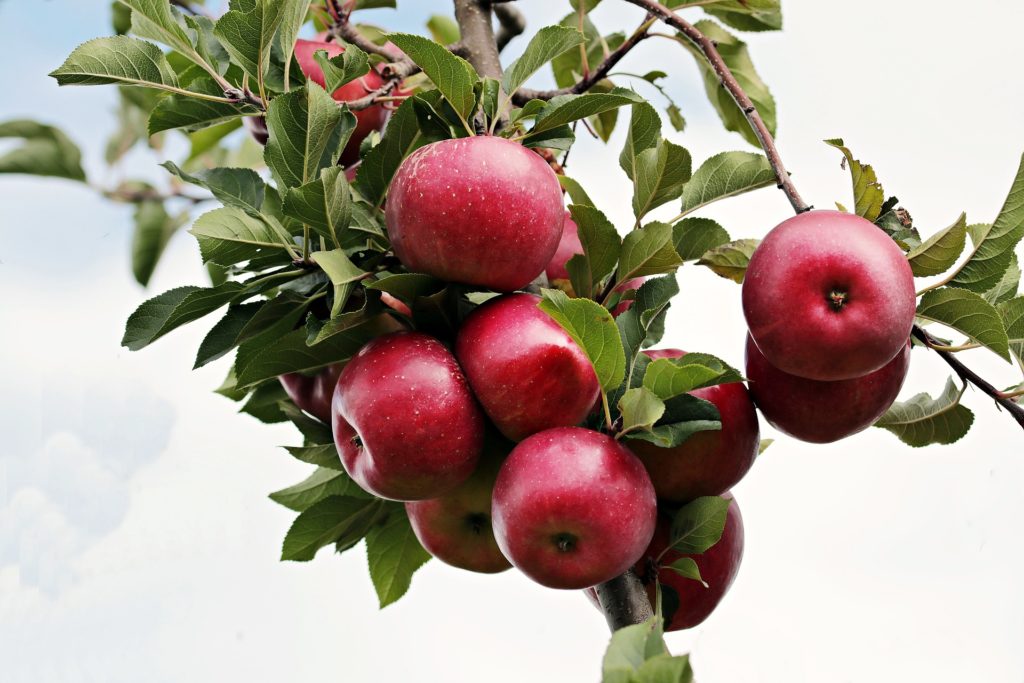
The apple tree (Malus domestica) is often a favorite choice among homeowners due to its versatility and hardiness. It thrives in USDA zones 3-8, making it suitable for northern and temperate regions.
Apple trees require well-drained soil and full sun exposure. There are numerous varieties, each bringing a unique flavor profile—from sweet to tart. For instance, ‘Honeycrisp’ is celebrated for its juicy sweetness, while ‘Granny Smith’ offers a delightful tartness perfect for baking.
One essential consideration for planting apple trees is cross-pollination. Most apple varieties are not self-pollinating, which means planting another variety nearby can help increase fruit yield. Fall is the ideal time for planting, allowing roots to establish before winter.
Pear Tree
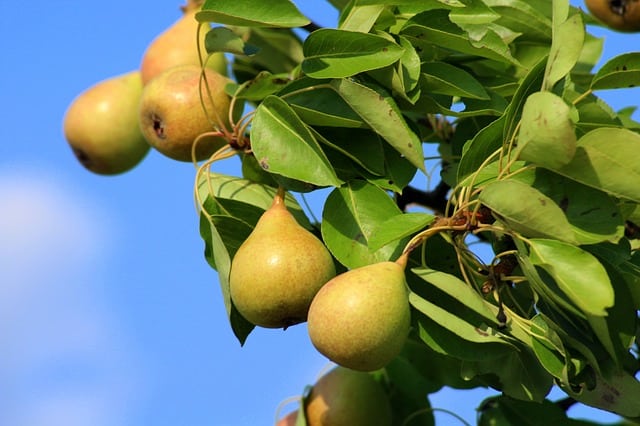
Pear trees (Pyrus communis) add elegance to any backyard with their beautiful blooms and sweet fruit. Hardy in USDA zones 4-9, they are adaptable and flourish in varied climates, especially in temperate regions.
With a preference for well-drained soils and full sunlight, pear trees can be a bit more forgiving than others in terms of watering. Committing to maintain moisture during dry spells is crucial for fruit development. Key varieties like ‘Bartlett’ offer sweet, juicy pears while ‘Bosc’ presents a more robust flavor and texture.
Similar to apples, most pear trees benefit from cross-pollination, making it wise to plant more than one variety. Additionally, these trees are less prone to pests than apples, reducing maintenance issues for the gardener.
Cherry Tree

A cherry tree (Prunus avium) can transform any garden into a picturesque landscape with its stunning blossoms. Suitable for USDA zones 5-9, cherry trees thrive in full sun and well-draining soil.
There are sweet varieties like ‘Bing’ that are perfect for fresh eating and tart varieties such as ‘Montmorency,’ which are ideal for pies and jams. When choosing a site, it’s crucial to consider that cherry trees need proper pollination—most are self-unfruitful, thus requiring at least one other compatible tree nearby.
An essential consideration for cherries is their susceptibility to pests such as aphids and leafhoppers. Regular monitoring and organic pest management can mitigate these issues, ensuring a bountiful harvest.
Peach Tree
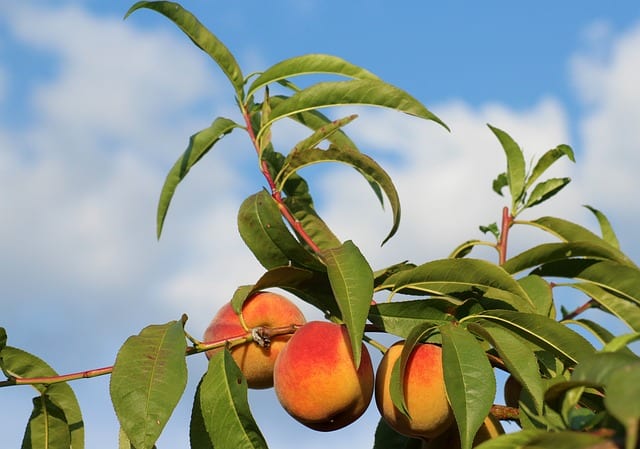
Peach trees (Prunus persica), with their luscious fruit and fragrant blossoms, offer an inviting aroma to summer gardens. They grow best in USDA zones 5-9 and prefer well-drained, sandy loam soil with full sunlight.
This tree can be somewhat finicky regarding chill hours, as they require a certain number of cold winter days to produce fruit successfully. Varieties like ‘Elberta’ and ‘Red Haven’ promise delicious, freestone peaches that are perfect for fresh eating or canning.
Peach trees are also prone to pests and diseases such as peach leaf curl. Implementing preventative measures, including proper pruning and fungicide treatments, can help maintain their health and fruit yield.
Plum Tree
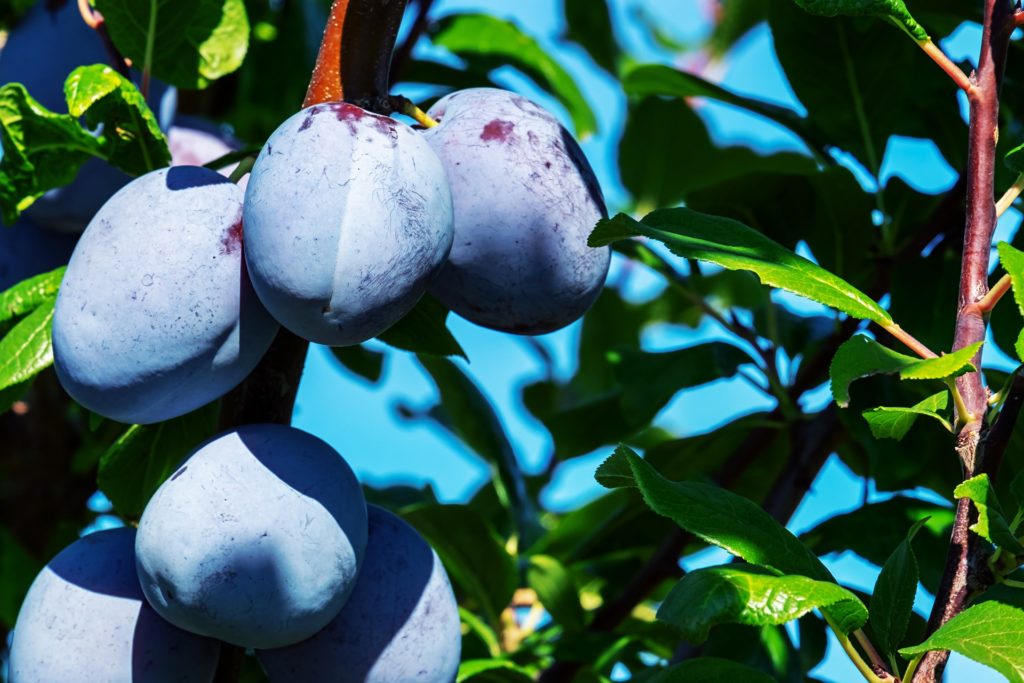
Plum trees (Prunus domestica) are a delicious addition to any backyard, ideal for USDA zones 5-9. They flourish best in full sun and well-drained sandy or loamy soil.
Varieties abound, with European plums like ‘Italian’ being popular for canning, while Japanese types such as ‘Santa Rosa’ are delightful when eaten fresh. Unlike apple and pear trees, many plum varieties are self-pollinating, providing more flexibility in garden planning.
It’s essential to note that plum trees have a shorter shelf life post-harvest than apples or pears, so prompt processing or consumption of the fruit is advisable once collected.
Fig Tree
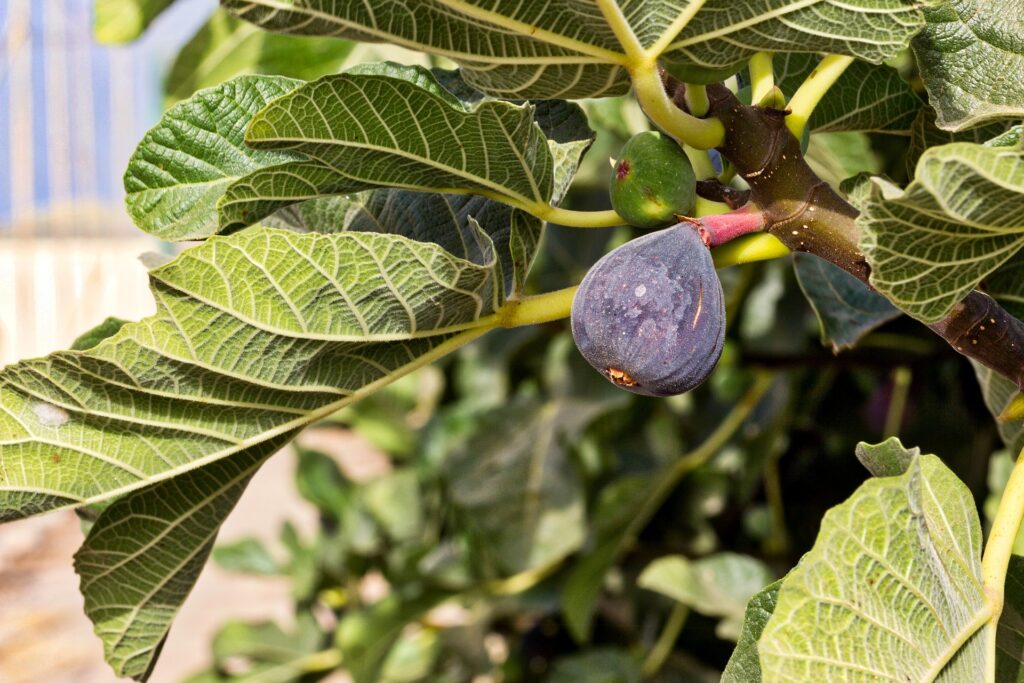
The fig tree (Ficus carica) is a unique choice that thrives in warmer climates, specifically USDA zones 7-10. These trees love full sunlight and well-drained soil, making them ideal for southern backyards.
Figs, such as the sweet ‘Brown Turkey’ or the delectable ‘Black Mission,’ are known for their distinctive, rich flavors. One of the beauties of fig trees is that they can be grown in containers, allowing for versatility in planting options.
A noteworthy consideration for maintaining fig trees is their preference for minimal watering; overwatering can lead to root rot. Additionally, their fruit does not ripen evenly, which means you may experience a staggered harvest, making for an extended enjoyment of fresh figs.
Lemon Tree
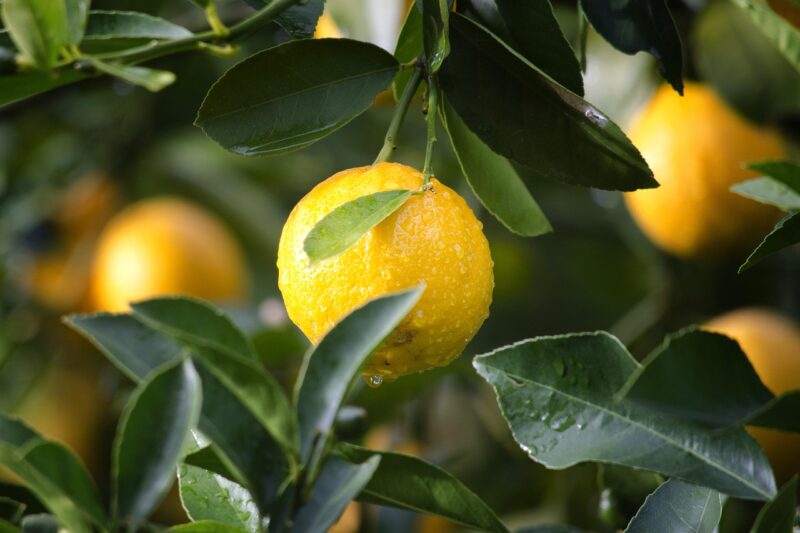
The lemon tree (Citrus limon) is beloved for its aromatic fruit and fragrant flowers. Thriving in USDA zones 9-11, these trees prefer sunny positions and well-draining soil, often thriving in coastal climates.
Popular lemon varieties like ‘Eureka’ and ‘Lisbon’ provide countless culinary uses, from fresh lemonade to zesting in pastries. These trees can also be grown in pots, allowing them to become dynamic indoor-outdoor plants in cooler climates.
Regular watering is crucial, particularly during dry spells, but lemon trees must not be overwatered. Implementing regular feeding with citrus-specific fertilizers can enhance yield and fruit quality.
Orange Tree
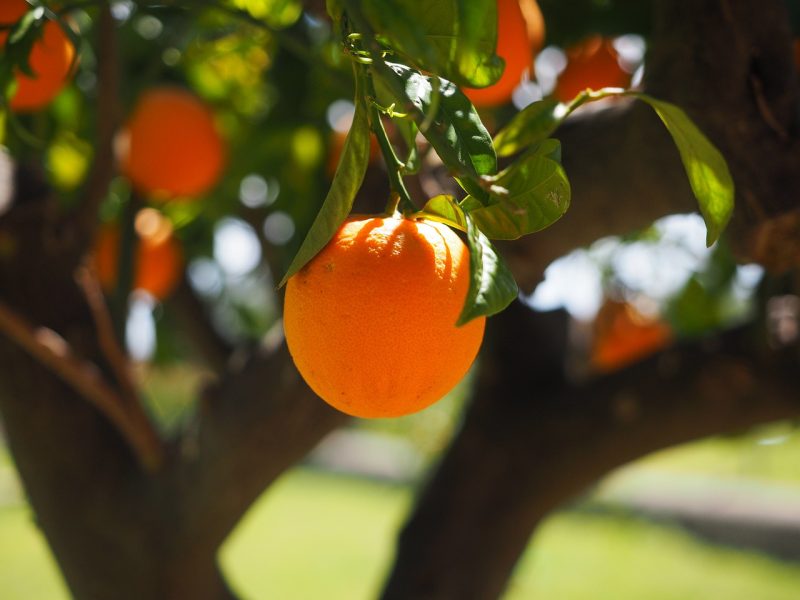
The orange tree (Citrus sinensis), iconic for its bright and tangy fruit, also prefers warmer climates, flourishing in USDA zones 9-11. They thrive best in full sun and rich, well-drained soil.
Popular varieties such as ‘Valencia’ and ‘Navel’ are celebrated for their sweetness and juiciness. Orange trees are a fantastic addition to both landscaping and an edible garden, as they provide visual appeal alongside their delicious fruit.
Orange trees require regular watering but should not sit in stagnant water, as this can lead to root rot. They are also susceptible to pests like aphids and spider mites, which calls for regular monitoring and management.
Banana Tree
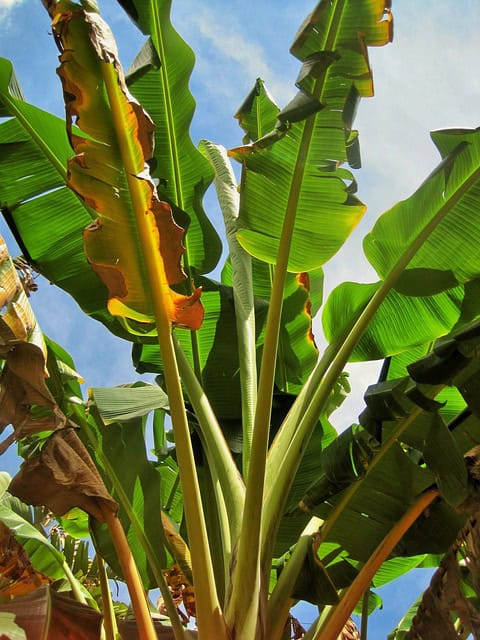
Banana trees (Musa spp.) are a tropical dream that many desire in their backyards, especially in USDA zones 9-11. They require full sun and rich, well-draining soil to thrive, making them perfect for warmer regions.
These colossal plants are technically large herbaceous plants and can grow quite tall, depending on the variety. Varieties like ‘Cavendish’ are most commonly grown for consumption, but decorative types can also add visual interest.
Banana trees need consistent watering to maintain moisture levels and should be regularly fertilized to ensure healthy growth. Surprisingly, bananas are also relatively resilient to pests but can occasionally attract aphids and spider mites.
Pomegranate Tree
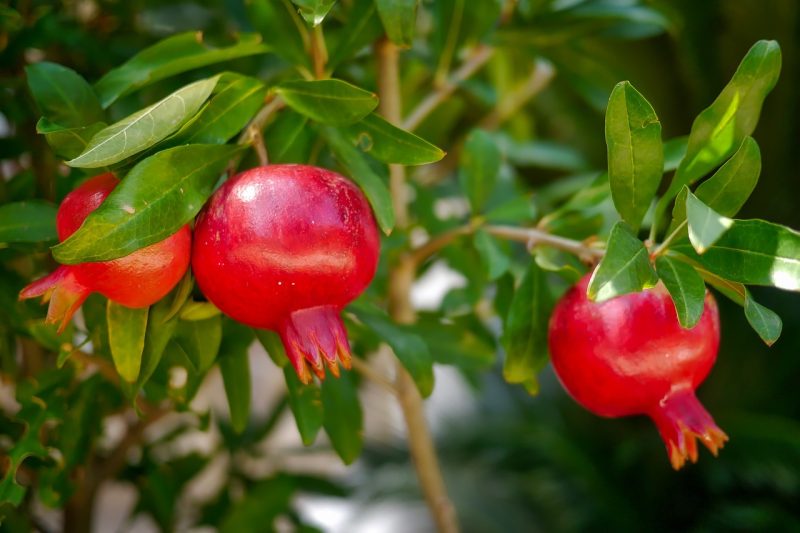
The pomegranate tree (Punica granatum) is a unique and visually striking addition, flourishing in USDA zones 8-10. It prefers full sunlight and is remarkably drought-tolerant once established, making it suitable for arid regions.
Pomegranates like ‘Wonderful’ produce juicy, ruby-red seeds that are a nutritious delight. Their beautiful, bright orange-red flowers further enhance their ornamental appeal.
Prune your pomegranate tree annually to promote healthy growth and improve air circulation, which can prevent diseases like root rot. With minimal pest issues, they stand as a low-maintenance option for fruit enthusiasts.
Apricot Tree

The apricot tree (Prunus armeniaca) is a delightful tree that can yield sweet, aromatic fruits. Thriving in USDA zones 5-9, they prefer well-drained sandy or loamy soils and require full sun to produce abundant fruit.
Varieties like ‘Tilton’ and ‘Blenheim’ are treasured for their flavor and culinary versatility, whether fresh, dried, or preserved. Apricot trees generally have a low-maintenance requirement, although they can be sensitive to frost, particularly during blooming.
Choosing the right planting location is critical, as avoiding shady spots can help reduce frost damage. Proper watering during dry spells is also important for maintaining fruit quality.
Mango Tree
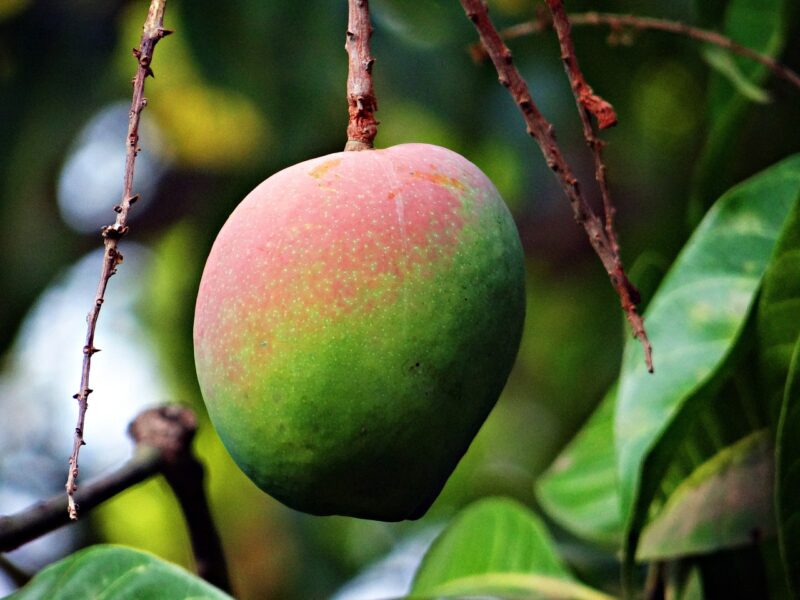
The mango tree (Mangifera indica) is a tropical wonder that brings succulent, sweet flavors to your garden. Ideal for USDA zones 10-11, these trees flourish in warm, sunny environments and well-drained, sandy soils.
Varieties like ‘Alphonso’ and ‘Haden’ are celebrated for their creamy texture and sweet flavor. Mango trees can even be grown in containers, allowing gardeners in cooler zones to move them indoors during colder months.
Mango trees prefer moderate watering but are extremely tolerant of drought conditions once established. However, be mindful of pests such as scale insects and mealybugs, which can occasionally affect younger trees.
Olive Tree
The olive tree (Olea europaea) is not only a source of delicious fruit but also an iconic plant of Mediterranean landscapes. Thriving in USDA zones 8-10, olives prefer well-drained soils and can tolerate drought, making them ideal for warmer regions.
Varieties like ‘Manzanilla’ and ‘Kalamata’ produce flavorful olives that can be harvested for eating or oil production. These trees necessitate a warm climate and full sun to yield a successful crop.
Regular pruning promotes healthy growth and improves air circulation, while proper fertilization can enhance fruit quality. While olive trees are generally hardy, be vigilant about root rot, particularly in overly wet conditions.
Quince Tree
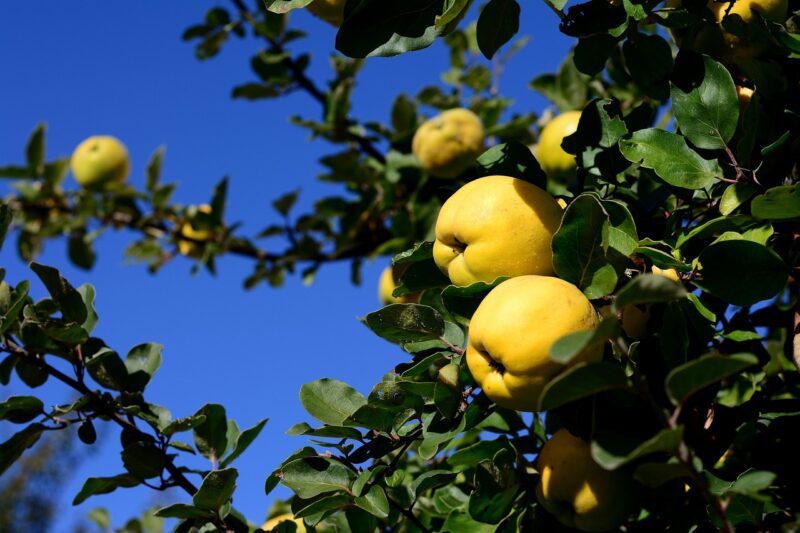
Quince trees (Cydonia oblonga) produce unique, aromatic fruit that is often overlooked. Thriving in USDA zones 5-9, they prefer well-drained soil and full sun.
Often confused with apples and pears, quinces are used to make jams, jellies, and other sweet treats, due to their high pectin content. Varieties like ‘Pineapple’ and ‘ Smyrna’ are known for their exceptional flavors.
Regular pruning can help maintain shape and promote air circulation, preventing disease. Quinces are less prone to pests, making them a low-maintenance choice for anyone looking to add something unique to their landscape.
Avocado Tree

The avocado tree (Persea americana) has gained popularity in recent years, thanks to its creamy, green fruit packed with healthy fats. Thriving in USDA zones 9-11, avocados prefer full sun and well-drained, rich soil.
Popular varieties like ‘Hass’ and ‘Fuerte’ offer distinct flavors, although the ‘Hass’ is favored for its creamy texture and high oil content. Avocado trees can also be grown in containers, providing versatility for those in cooler regions.
These trees require regular watering and can be sensitive to overwatering. With proper care, they can yield fruit within 3-4 years, providing an exciting addition to your backyard.
Lime Tree

Lime trees (Citrus aurantiifolia) are particularly loved for their zesty fruits, ideal for flavoring a variety of dishes and drinks. Thriving in USDA zones 9-11, they prefer sunny spots and well-draining soil.
Popular lime varieties include the ‘Key Lime’ and ‘Persian Lime,’ both used prominently in cooking and cocktails. They can be grown in pots or directly in the ground, adapting to various gardening scenarios.
Regular watering and fertilizing are key to ensuring vibrant fruit, while pest management, especially for aphids and spider mites, can help maintain tree health.
Grapefruit Tree
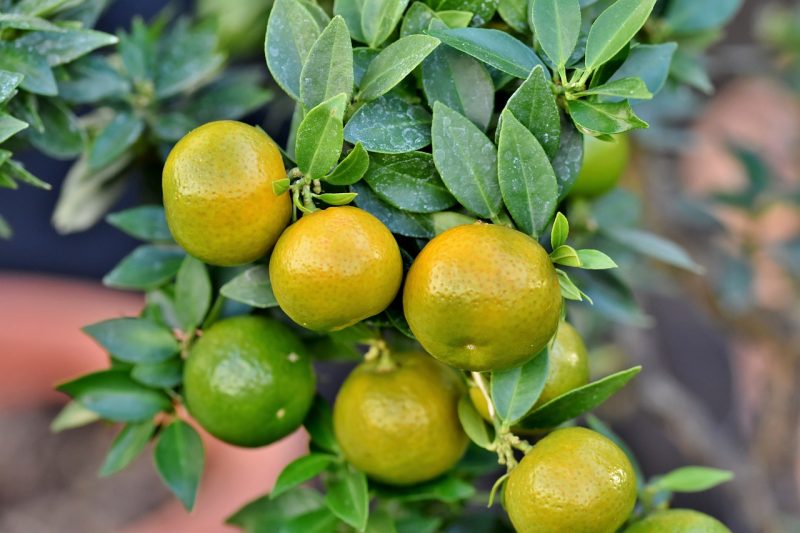
The grapefruit tree (Citrus × paradisi) brings a burst of citrus flavor and brightens any garden. Suited for USDA zones 9-11, these trees prefer full sunlight and well-draining, fertile soil.
Varieties like ‘Ruby Red’ and ‘White Marsh’ are popular choices, known for their tangy taste and juicy texture. Grapefruit trees require consistent moisture, particularly as they flower and develop fruit.
While they are generally hardy, keep an eye out for pests like scale and citrus leaf miner, which can occasionally affect their growth.
Kumquat Tree
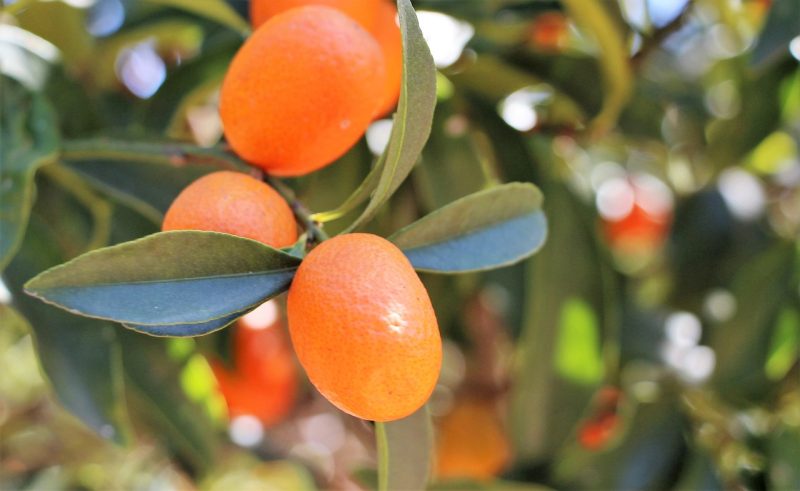
The kumquat tree (Fortunella spp.) offers a unique twist on traditional citrus fruit. Thriving in USDA zones 9-11, they prefer warm, sunny conditions and well-draining soil.
Varieties like ‘Nagami’ and ‘Meiwa’ are known for their sweet, peelable skins, making them popular for fresh snacking. Kumquat trees are relatively low-maintenance, and their compact size makes them ideal for containers or small gardens.
Regular watering is both necessary and critical during fruit production, while monitoring for pests can help maintain tree health.
Mulberry Tree
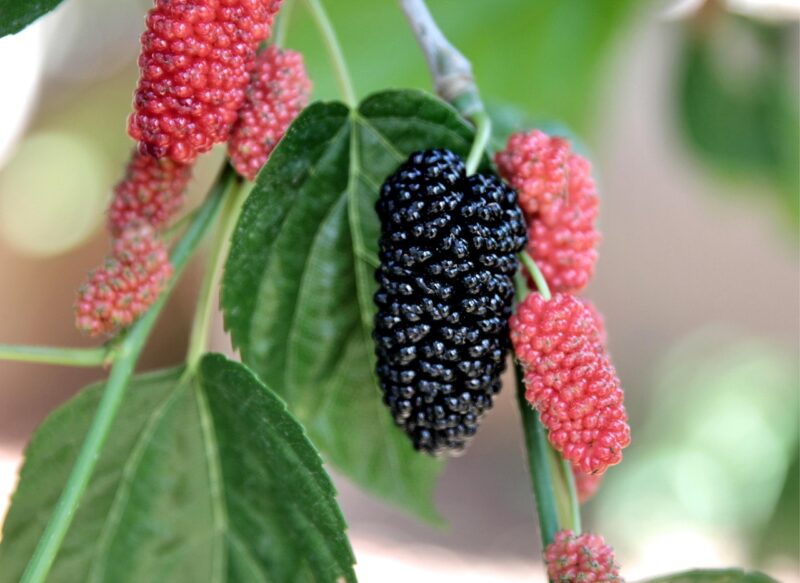
Mulberry trees (Morus spp.) are often underestimated yet provide abundant fruit in various climates, thriving in USDA zones 5-9. They prefer full sun and can adapt well to poor soils.
Varieties like ‘Black Mulberry’ and ‘White Mulberry’ yield sweet, juicy berries that can be enjoyed fresh or used in sweets and jams. These trees can grow large, so it’s vital to plan accordingly if planting in smaller yards.
Mulberries require regular pruning to manage size and promote fruit development. They are generally pest-resistant, making them an easy choice for backyard gardening.
Papaya Tree
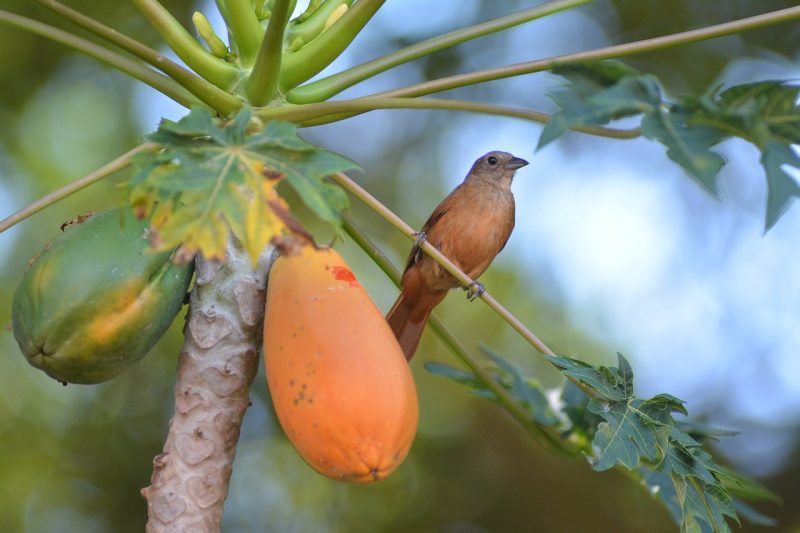
The papaya tree (Carica papaya) adds an exotic touch to any garden, producing delicious, soft fruit. Ideal for USDA zones 10-12, papayas thrive in warm, sunny climates, with a preference for well-drained soil.
With varieties such as ‘Hawaiian Sunrise’ and ‘Solo,’ papayas are noted for their sweet flavor and vibrant flesh. They are fast-growing and can produce fruit within 6-12 months from seed.
Regular watering is especially important, as papayas need consistent moisture levels to thrive. The trees are also relatively forgiving when it comes to pests, making them a low-maintenance option.
Nectarine Tree
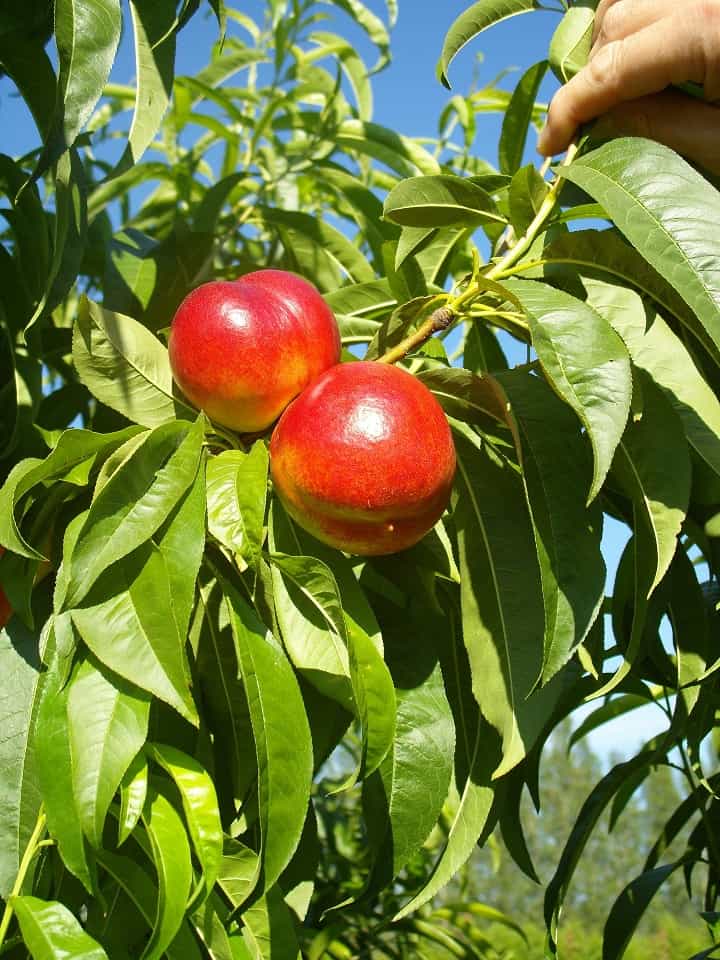
Nectarine trees (Prunus persica var. nucipersica) yield sweet, juicy fruits that many gardeners adore. Thriving in USDA zones 5-9, they prefer well-drained soil and full sunlight.
Popular varieties like ‘Fantasia’ and ‘Red Gold’ offer luscious, freestone nectarines that can be enjoyed fresh or used in desserts. Practicing proper pruning is important to promote air circulation and reduce disease risk.
These trees require regular watering during dry spells but are generally less prone to pests than their peach counterparts.
Goji Berry Tree
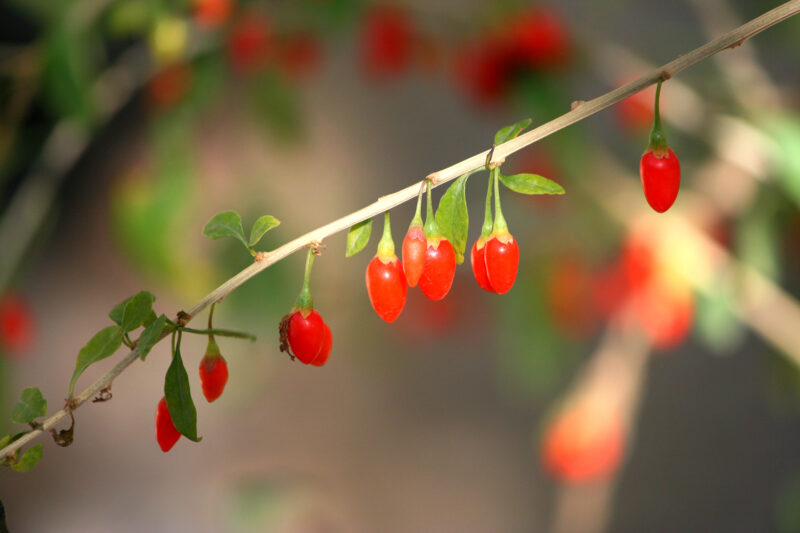
Goji berry plants (Lycium barbarum) are increasingly popular for their health benefits and adaptability. Thriving in USDA zones 3-10, they prefer well-drained soil and are highly drought-resistant once established.
Known for their bright orange-red berries, goji berries are packed with antioxidants and can be eaten fresh, dried, or used in smoothies. They are also self-pollinating, making them easy to grow in urban backyards.
Regular watering during the establishment phase is critical, while pruning can help manage their growth and encourage berry production. They are generally low-maintenance and not prone to pests, making them a great choice for home gardens.
Persimmon Tree
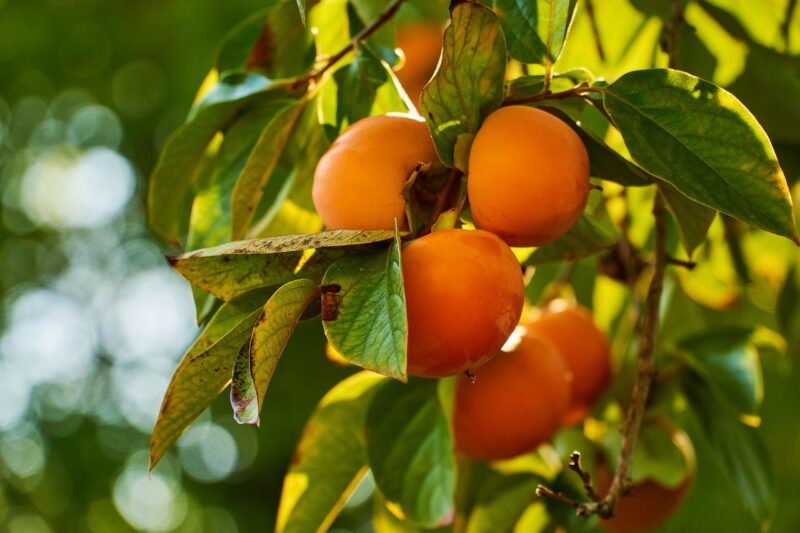
Persimmon trees (Diospyros spp.) offer a different flavor experience with their sweet, honey-like fruit. Thriving in USDA zones 4-9, they prefer well-drained soil and can tolerate various light conditions, although they bloom best in full sun.
Varieties like ‘Fuyu’ are known for their sweet, flavorful fruit that can be eaten fresh or used in desserts. These trees are also quite ornamental, producing vibrant fall foliage.
Persimmons are generally low-maintenance, requiring minimal pruning and pest monitoring. However, protecting young trees from frost during blooming can enhance fruit production.
Lychee Tree
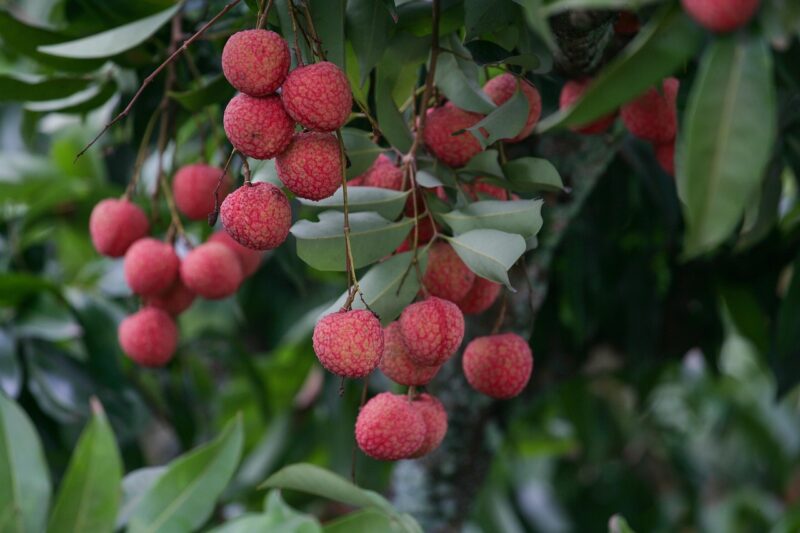
The lychee tree (Litchi chinensis) provides a taste of the tropics with its sweet, aromatic fruit. Thriving in USDA zones 10-11, these trees prefer warm climates and well-drained, fertile soils.
With varieties like ‘Brewster’ and ‘Hak ip,’ lychees are treasured for their unique, floral flavor. These trees can be somewhat challenging to grow in cooler areas but offer stunning foliage and visual appeal.
Keeping the tree hydrated during dry spells and regularly feeding it with a balanced fertilizer can improve fruit quality. While they can be susceptible to pests such as scale and mealybugs, vigilant monitoring is often sufficient.
Pawpaw Tree
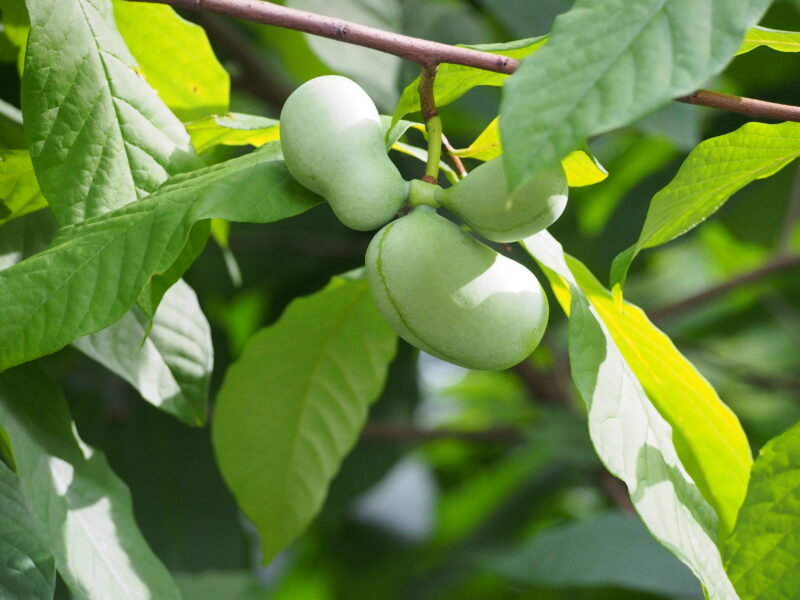
The pawpaw tree (Asimina triloba) is America’s largest native fruit and a hidden gem for home gardeners. Thriving in USDA zones 5-9, they prefer well-draining soil and partial shade, making them suitable for woodland gardens.
Pawpaw fruit has a custard-like consistency and tropical flavor, reminiscent of banana and mango. Planting multiple trees can enhance cross-pollination, improving yield.
Pawpaws are generally low-maintenance, although they are susceptible to a limited number of pests. Regular watering can help maintain fruit quality and contribute to stronger tree health.
Starfruit Tree
Starfruit trees (Averrhoa carambola) produce visually striking fruit that adds flair to any garden. Thriving in USDA zones 9-11, these trees prefer full sunlight and well-drained, fertile soils.
The fruit is not only unique in shape but also offers a delightful, sweet-tart flavor that makes it popular for salads and desserts. Starfruit trees can bloom and produce fruit multiple times a year under the right conditions.
Regular watering is crucial, especially during dry spells, while pruning helps encourage healthy growth. Be mindful of pests such as aphids and mealybugs, which can impact growth and yield.
Loquat Tree
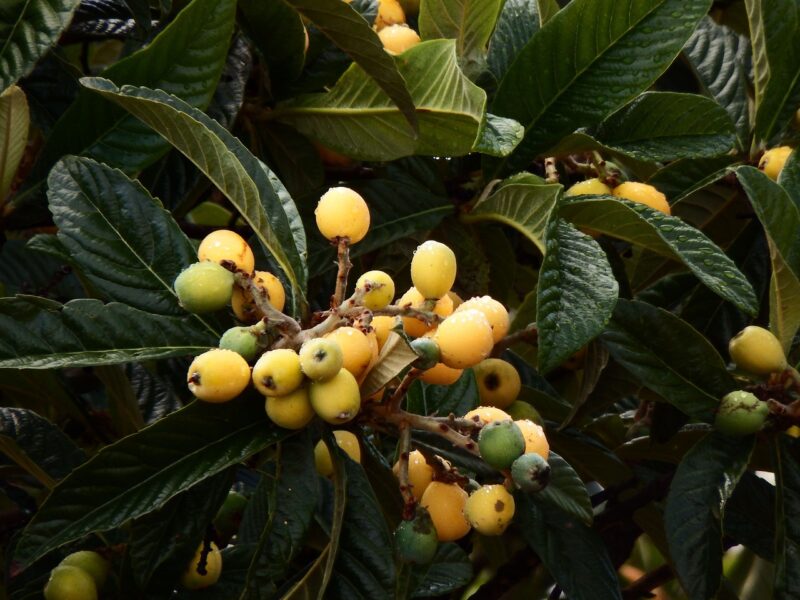
The loquat tree (Eriobotrya japonica) offers a unique fruit that’s often enjoyed fresh, in jams, or even wines. Loquats thrive in USDA zones 8-10, preferring full sun and well-drained soil.
Varieties like ‘Champagne’ and ‘Golden Nugget’ are known for their sweet, tangy flavor and juiciness. These trees are relatively small, making them ideal for smaller backyards.
Regular watering can help fruit development, but be cautious of overwatering. Loquat trees are largely pest-resistant, providing a low-maintenance option for gardeners.







